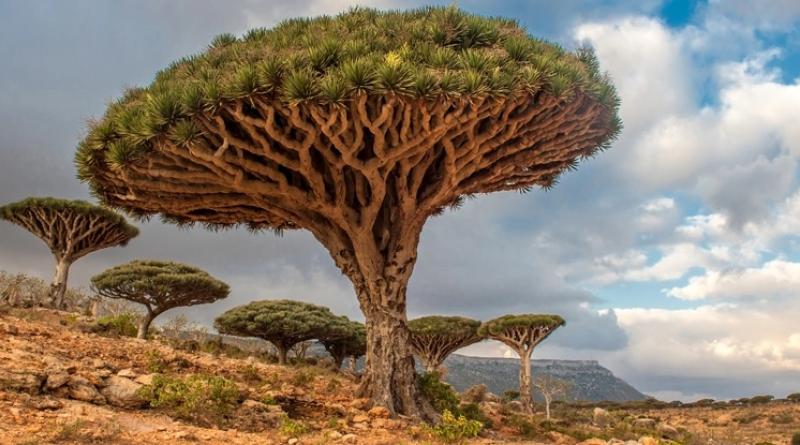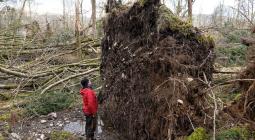From soaring coastal redwoods to dinosaur-era Wollemi pines and firs that make the perfect Christmas trees, even our most revered woody plants are in an awful lot of trouble.
But it turns out that losing some species won't just endanger local forests; it will threaten entire ecosystems, says a new study.
Last year, a global assessment titled State of the World's Trees found a shocking one-third of all tree species are currently teetering on the edge of existence.
This amounts to about 17,500 unique tree species that are endangered.
That's more than double the number of all threatened tetrapods (mammals, birds, amphibians, and reptiles).
Some trees are so rare that only a single known individual remains, like the lonesome palm in Mauritius, Hyophorbe amaricaulis.
In a new paper, the same team of researchers behind the State of the World's Trees reports issues a "warning to humanity" about the consequences of these losses, backed by 45 other scientists from 20 different countries.
Conservation biologist Malin Rivers from Botanic Gardens Conservation International and colleagues outline the many impacts these losses will have on our economies, livelihoods, and food.
Most of our fruit comes from trees, as do many nuts and medicines, with non-timber products amounting to about US$88 billion worth of trade.
In the developing world, 880 million people rely on firewood for fuel, and 1.6 billion people live within 5 kilometers (3 miles) of a forest, relying on them for food and income.
All up, trees contribute about US$1.3 trillion annually to the global economy, yet we're destroying billions of them every year – clearing massive tracts of land for farming and development.
Trees are each their own little worlds, teeming with all sorts of single- and multicellular-life forms, including other plants, fungi, bacteria, and animals. Lose a tree, and this entire world dies too. They often form the supportive base for the whole web of life around them.
In fact, half of all the world's animals and plants rely on treed habitats.
"Habitat loss is frequently tree loss, it is at the root of that when we look at extinction concerns for animals or birds," Rivers told Nature World News. "There is no way we can take care of all the other creatures there if we don't take care of the trees."
As with all living systems, losing diversity makes the whole jumble of living connections more vulnerable.
This is because less variation means less diversity in immune response, in genes, and responses to environmental conditions, meaning lower chances of surviving the many threats battering the complex web of interactions that is life on Earth.
Some tree species provide unique interactions and can't be replaced by other species.
This includes the distinctive dragonsblood trees (Dracaena cinnabari), leftover from the ancient Oligocene woodlands, which are host to many other species that are entirely dependent on them, including many other plants and the gecko that pollinates it.
So the extinction of a single species can cause a massive domino effect across everything else that interacts with it, even if they're already rare.
Species that rely on our dwindling forests have already declined by around 53 percent since 1970, and more forests around the world are showing signs of increasing stress.
This doesn't just impact the other life trees interact with either.
Trees are interwoven with Earth's soil, atmosphere, and weather, too – cleaning our air, producing oxygen, and making it rain. They store three-quarters of the world's accessible freshwater and more than half its problematic carbon dioxide.
Lose enough trees and our planet's cycling of carbon, water and nutrients will be thrown into disarray.
"We're showing that diverse forests store more carbon than monocultures," Rivers told The Guardian.
"That's true for many ecological functions, not just carbon capture, but providing habitat to animals, soil stabilization, resilience to pests and diseases, resilience to storms and adverse weather. By losing tree diversity, we'll also lose diversity in all organisms: birds, animals, fungi, microorganisms, insects."
A few tree species are getting lucky and able to take advantage of the rapid environmental changes we've caused, like those creeping into territory that fires have cleared. But many more are being obliterated by the same processes.
Much needs to be done to combat this at a collective level, but we all can play a part by recognizing the importance of trees and fighting our own plant blindness. Earlier this year, researchers pointed out that fewer people than ever are taking up botanical education in the UK at a time when we need plants more than ever.
In the lead-up to the UN's Cop15 biodiversity conference this December, Rivers and colleagues urge leaders to integrate trees into climate policies better and provide greater protections for them. We must all think of the trees.
This research was published in Plants, People, Planet.







